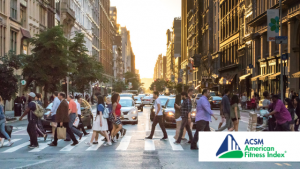
In 2018, 6,227 pedestrian fatalities occurred in the United States, the highest number in nearly three decades and a four percent increase from 2017 according to a report earlier this year from the Governors Highway Safety Association (GHSA). “While we have made progress reducing fatalities among many other road users in the past decade, pedestrian deaths have risen 35 percent,” noted GHSA Executive Director Jonathan Adkins. Pedestrians were projected to account for 16 percent of all traffic deaths in 2018, compared to 12 percent in 2008. The high rate of pedestrian fatalities is a growing public health issue that often gets little notice, but should, particularly now that more individuals are walking, running or biking for exercise and commuting.
Following advice from experts, such as those from the American College of Sports Medicine and perhaps their own physicians, many Americans are becoming more physically active to improve their health, reduce their risk for many diseases and increase their quality of life. As a result, individuals have taken to the streets to walk, jog, run and bike. The American Fitness Index incorporates several related measures, including the percent of residents bicycling or walking to work, the Walk Score and Bike Score for cities and the percent of residents using public transportation, as it calculates city fitness scores and rankings.
Despite knowing the health benefits, safety concerns can be a major barrier to physical activity for individuals who are uncomfortable exercising on or near city streets, since sharing the streets with motor vehicles poses a risk of injury or even death for pedestrians. For this reason, the Advisory Board of the Fitness Index added pedestrian fatality rates as a health outcome indicator in 2019. The Advisory Board believes the higher the pedestrian fatality rate, the more likely it will be a barrier for residents’ physical activity, leading to a less fit city.
In the 2019 Fitness Index rankings, four of the 10 cities with the highest pedestrian fatality rates were located in Florida (St. Petersburg, Jacksonville, Orlando and Tampa) and two more were also in the southeast region (Atlanta and New Orleans). On the other end of the spectrum, of the cities with the lowest rates, two were in Virginia (Arlington and Virginia Beach) and two others were in Nebraska (Lincoln and Omaha).
As you have been driving, perhaps you have worried about how to safely pass a walker, runner or cyclist on the street? This knowledge gap is a major problem for drivers when people are exercising or commuting on foot particularly in early morning, at dusk and especially at night when visibility is poor. Over the past 10 years, nighttime crashes accounted for more than 90 percent of the total increase in pedestrian deaths.
Next Steps
To reduce this trend, (which has been accomplished in some cities!) additional efforts need to focus on what the city, drivers and pedestrians can do to increase safety. For example, cities can adopt Complete Streets policies, one of the Fitness Index indicators, which focus on designing, constructing and maintaining streets to be safe for all users. These designs can help slow drivers and encourages them to be more cautious around pedestrians. Communities can also help reduce pedestrian fatalities by educating both drivers and pedestrians on following traffic rules and speed limits and safety measures when exercising or commuting on streets. For additional resources to improve pedestrian safety, visit the National Highway Traffic Safety Administration.
The bottom line is that attention to pedestrian safety by city leaders, drivers and pedestrians themselves are all needed to reduce pedestrian fatalities.


